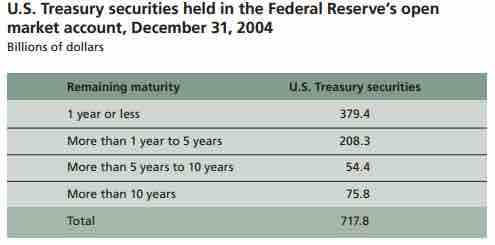Open Market Operation
An open market operation (also known as OMO) is an activity by a central bank (in the U.S. it is the Fed) to buy or sell government bonds on the open market. A central bank uses them as the primary means of implementing monetary policy. The usual aim of open market operations is to control the short term interest rate and the supply of base money in an economy, and thus indirectly control the total money supply. This involves meeting the demand of base money at the target interest rate by buying and selling government securities, or other financial instruments. Monetary targets, such as inflation, interest rates, or exchange rates, are used to guide this implementation.
In theory, the Federal Reserve could conduct open market operations by purchasing or selling any type of asset. In practice, however, most assets cannot be traded readily enough to accommodate open market operations. For open market operations to work effectively, the Federal Reserve must be able to buy and sell quickly, at its own convenience, in whatever volume may be needed to keep the federal funds rate at the target level. These conditions require that the instrument it buys or sells be traded in a broad, highly active market that can accommodate the transactions without distortions or disruptions to the market itself. The market for U.S. Treasury securities satisfies these conditions. The U.S. Treasury securities market is the broadest and most active of U.S. financial markets. Transactions are handled over the counter, not on an organized exchange. Although most of the trading occurs in New York City, telephone and computer connections link dealers, brokers, and customers—regardless of their location—to form a global market.
Composition of the Federal Reserve's Portfolio
The overall size of the Federal Reserve's holdings of Treasury securities depends principally on the growth of Federal Reserve notes; however, the amounts and maturities of the individual securities held depends on the FOMC's preferences for liquidity. A sizable share of the Federal Reserve's holdings is held in Treasury securities with remaining maturities of one year or less. This structure provides the Federal Reserve with the ability to alter the composition of its assets quickly when developments warrant. At the end of 2004, the Federal Reserve's holdings of Treasury securities were about evenly weighted between those with maturities of one year or less and those with maturities greater than one year.

U.S. Treasury securities held in the Federal Reserve's open market account, December 31, 2004
In billions of dollars.